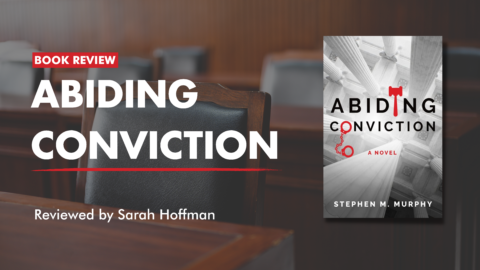When the law firm Pillsbury Winthrop Shaw Pittman asked employees to share their wellness concerns in a confidential survey last year, lawyers and professional staff alike reported stress as the top issue by far.
Yet few people were taking advantage of the mental health services provided by the firm’s employee assistance program.
Why the disconnect?
Pillsbury’s Chief Human Resources Officer Kathleen Pearson found that it often took days or weeks to schedule appointments with providers and, in some cases, the providers ultimately weren’t the right fit.
To address the urgent concerns of its employees more quickly, the law firm recently partnered with an online health service that matches individuals with specialized therapists or coaches. Topics for help include stress, anxiety, depression, relationship issues, sleep disorders, and substance abuse. Appointments can take place in person or virtually.
“Our goal was to find a solution that would meet our population where they were at the exact time they needed care the most,” Pearson said.
Early indications show the program hit the mark. Within three weeks, 10 percent of the global workforce signed up for the confidential service. One person emailed Pearson to say, “This literally saved my life.”
It’s one example of the creative steps large law firms with offices in San Francisco are taking to tackle the mental health problems that have long pervaded the legal profession. (Full disclosure: I have done occasional freelance writing for Pillsbury and other Bay Area law firms.)
Law firms have been paying particular attention to the issue since August 2017, when the American Bar Association’s National Task Force on Lawyer Well-being issued a report with recommendations for positive changes.
Since the report came out, 170 law firms, legal departments, and government legal agencies have signed the ABA’s well-being pledge, said Anne Brafford, editor-in-chief of the report and a former employment litigator and equity partner at Morgan Lewis & Bockius. She left the firm in 2014 to work on creating better cultures at law firms through her consulting business.
“When I was practicing law, well-being wasn’t considered a team sport—you had to do it on your own,” Brafford said, compared to now, when law firms and bar associations appear to be taking this issue seriously.
A Holistic Approach to Wellness
Large law firms, which typically have offices around the globe, are rolling out firmwide initiatives while also providing flexibility to local offices to adapt their programs as they see fit.
Reed Smith was among the first firms to sign the pledge. The firm launched its Wellness Works initiative in 2018 to help the workforce “manage stress, achieve work-life balance, develop healthy habits, and attain positive mindfulness.”
The firm has collected helpful resources on the internal firm website. Each month, the firm addresses a different topic and organizes events ranging from fun art-sharing projects, volunteer outings and exercise challenges (appealing to the competitive nature of many lawyers) to presentations on more sober topics.
“It’s a very broad-based look at wellness. Not everything is going to work for everyone,” said Casey Ryan, Reed Smith’s Global Head of Legal Personnel.
For Dry January, people committed to not drinking and then shared with their colleagues how they felt. In March, a Stop the Stigma campaign featured people sharing their own personal stories of depression and other mental health conditions with their colleagues.
“At the end of the day, law firms are their people,” Ryan said. “The health and well being of your lawyers and staff is directly tied to your client service and your client experience.”
While large law firms have more resources to direct to these kinds of programs, Ryan emphasized that cost shouldn’t be a barrier. Firms of all sizes can make a big impact even with low- or no-cost efforts.
A summer walking challenge motivated employees to track their steps. People formed teams to compete for prizes.
“Some of these things sound hackneyed but I can assure you they’re not,” she said. “It’s been warmly embraced. People have had fun with it. It sort of begs the question, why weren’t we doing this earlier?”
Building Wellness Into Professional Development
For the past decade, Wilson Sonsini Goodrich & Rosati had been offering wellness programs at its Palo Alto office, where the firm got its start in 1961. But after signing the ABA pledge, the firm expanded its offerings and launched a resiliency curriculum as part of its professional development offerings.
The courses cover topics such as integrating mindfulness into your life, taming stress and minimizing digital distractions. As with Reed Smith’s program, the courses often feature lawyers or staff chronicling their own journeys with substance abuse or mental health issues.
Nancy Dolan, the firm’s legal curriculum and well-being specialist, openly shares her own story about being married to a meth addict. In 2008, she began practicing mindfulness to cope with the stress of a divorce and the death of her father.
“I make my life an open book. No question is out of bounds for me,” Dolan said. We are open and honest about having discussions.”
Julie Beley, senior director of compensation and benefits at Wilson Sonsini, said the approach helps to destigmatize substance abuse and mental health challenges.
“It helps people feel comfortable and recognized—knowing they’re not going through it alone,” she said.
Of course, not everyone wants to go public, and that’s fine, too, as long as employees understand that the firm is committed to helping them, Beley said.
Going forward, one of the firm’s goals is to identify well-being champions at each of its offices to make sure the message gets through and collect feedback about what’s working and what else the firm can do to help.
Pearson said she’s also been working with the leadership teams at Pillsbury to open up conversations about communication issues that can create an unhealthy work environment. For example, partners may not understand that associates who came of age using technology have different boundaries. As a result, the associate may perceive that a partner request needs immediate attention rather than asking for a deadline. The same goes for the way partners set boundaries with their clients.
“There are ways we can change the way people work to take some of the stressors out and refocus on the human side of the practice,” she said.
Making it Happen at Your Firm
Wellness programs at law firms are not only driven by the human resources department. Practice groups or diversity and inclusion leaders also can be the catalyst.
What’s most important is that the wellness programs receive buy-in from the firm’s leadership. One way to do that is by identifying metrics that can be used to measure and track success, the law firms’ representatives said. Another way is to demonstrate the problem.
By now it’s been well documented that lawyers suffer from mental health and substance abuse issues at much higher rates than other professions. Compared to the general population, lawyers are 3.6 times more likely to experience a major depressive episode, according to the 2015 joint survey conducted by the American Bar Association and Hazelden Betty Ford Foundation. Other alarming stats from the survey:
- Forty-five percent of lawyers have suffered from depression.
- Sixty-one percent of lawyers reported concerns about anxiety.
- Eleven percent of lawyers reported suicidal thoughts at some point in their careers.
- Thirty-two percent of lawyers under 30 are already problem drinkers.
When Pearson presents this information to the lawyers at her firm, she brings it home by pointing out that with seven hundred attorneys in the firm, that means seventy colleagues have seriously considered committing suicide.“If that doesn’t keep someone up at night, something is inherently wrong. You can’t just ignore that,” she said.
Pearson said her presentations have opened up productive conversations that prompt lawyers to do what they do best—issue spotting. “What could have been done differently here? How could a partner have worked better with the team or noticed a problem with an associate?”
Another key ingredient of successful wellness programs is targeting everyone who works at the law firm, not just attorneys, and making sure everyone on staff has access to the same resources.
Addressing the Root Causes
Why is the problem so pervasive in the legal profession? Stress is intrinsic for several reasons, said Judi Cohen, a Berkeley Law lecturer and the founder of Warrior One Mindfulness in Law Training.
There’s a need for perfectionism, which is a real need when missing a filing deadline could destroy your client’s case. The unpredictable nature of client demands and the adversarial nature of the legal system compounds the “fight or flight” signals being sent to the brain, she said.
Mindfulness practice can help lawyers recognize that agitated state of mind and shift to a healthier one.
It’s great that firms are prioritizing wellness, Brafford said, but to truly make a difference for the legal profession, larger issues need to be addressed such as how judges treat vacations and deadlines.
“If we really want well-being over the long term, it will need to be an institutional change industry-wide,” she said. “We have to keep the innovation and interest going so it doesn’t peter out at this initial stage.”
About the Author
Laura Ernde is a San Francisco-based communications consultant. She has covered legal affairs for more than a decade, as a journalist and former editor of the California Bar Journal.



